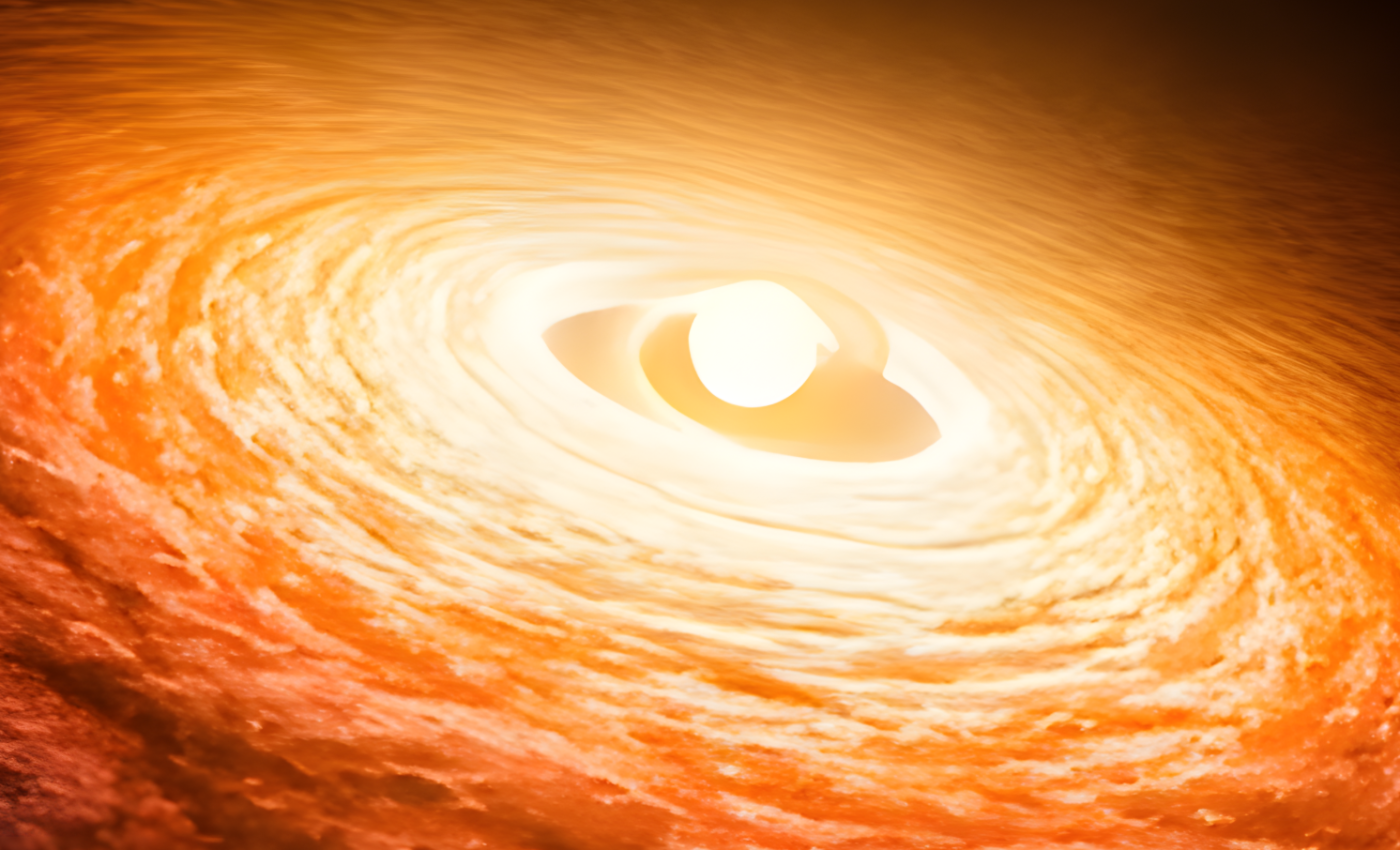
Hubble helps solve the mystery of a young, eruptive star
In 1936, astronomers observed a mysterious event in the constellation Orion: the young star FU Orionis (FU Ori) brightened by a factor of 100 within just a few months. At its peak, FU Ori was intrinsically 100 times more luminous than our Sun. Unlike an exploding star, however, its luminosity has only gradually declined since then.
A team of astronomers has now utilized the ultraviolet capabilities of NASA’s Hubble Space Telescope to gain deeper insight into the interaction between FU Ori’s stellar surface and the accretion disk that has been channeling gas onto the young star for nearly 90 years.
The findings reveal that the inner disk touching the star is extraordinarily hot, challenging conventional understanding.
The observations were made using Hubble’s Cosmic Origins Spectrograph (COS) and Space Telescope Imaging Spectrograph (STIS). The data include the first far-ultraviolet and new near-ultraviolet spectra of FU Ori.
New insights into stellar accretion
“We were hoping to validate the hottest part of the accretion disk model, to determine its maximum temperature, by measuring closer to the inner edge of the accretion disk than ever before,” said co-author Lynne Hillenbrand, an astronomer at the California Institute of Technology (Caltech).
“I think there was some hope that we would see something extra, like the interface between the star and its disk, but we were certainly not expecting it. The fact we saw so much extra – it was much brighter in the ultraviolet than we predicted – that was the big surprise.”
Initially considered a unique case among stars, FU Ori exemplifies a class of young, eruptive stars that undergo dramatic changes in brightness. These objects are a subset of classical T Tauri stars, which are newly forming stars that grow by accreting material from their disk and the surrounding nebula.
In classical T Tauri stars, the disk does not directly touch the star because it is kept at bay by the outward pressure of the star’s magnetic field.
Extreme temperatures of a young star
The accretion disks around FU Ori objects, however, are prone to instabilities due to their enormous mass relative to the central star, interactions with a binary companion, or infalling material. Such instability means the mass accretion rate can change dramatically.
The increased pace disrupts the delicate balance between the stellar magnetic field and the inner edge of the disk, allowing material to move closer and eventually touch the star’s surface.
According to study lead author Adolfo Carvalho, an astronomer at Caltech, the Hubble data indicates a much hotter impact region than models have previously predicted.
“In FU Ori, the temperature is 16,000 kelvins (nearly three times our Sun’s surface temperature),” noted Carvalho. “That sizzling temperature is almost twice the amount prior models have calculated. It challenges and encourages us to think of how such a jump in temperature can be explained,”
Hot young stars and ultraviolet emissions
To account for the significant difference in temperature between past models and the recent Hubble observations, the team proposes a revised interpretation of the geometry within FU Ori’s inner region.
The experts suggest that as the accretion disk’s material approaches and reaches the stellar surface, a hot shock is produced, emitting a substantial amount of ultraviolet light.
Implications for planet formation
Understanding the mechanisms of FU Ori’s rapid accretion process has broader implications for theories of planet formation and survival.
“Our revised model based on the Hubble data is not strictly bad news for planet evolution, it’s sort of a mixed bag. If the planet is far out in the disk as it’s forming, outbursts from an FU Ori object should influence what kind of chemicals the planet will ultimately inherit,” Carvalho explained.
“But if a forming planet is very close to the star, then it’s a slightly different story. Within a couple outbursts, any planets that are forming very close to the star can rapidly move inward and eventually merge with it. You could lose, or at least completely fry, rocky planets forming close to such a star.
Ongoing research and future exploration
Further work with the Hubble UV observations is underway. The team is carefully analyzing the various spectral emission lines from multiple elements present in the COS spectrum.
This Hubble analysis should provide additional clues about the young star’s environment, such as the kinematics of inflowing and outflowing gas within the inner region.
“A lot of these young stars are spectroscopically very rich at far ultraviolet wavelengths. A combination of Hubble, its size and wavelength coverage, as well as FU Ori’s fortunate circumstances, let us see further down into the engine of this fascinating star-type than ever before,” Hillenbrand concluded.
Image Credit: NASA-JPL, Caltech
The study is published in The Astrophysical Journal Letters.
—–
Like what you read? Subscribe to our newsletter for engaging articles, exclusive content, and the latest updates.
Check us out on EarthSnap, a free app brought to you by Eric Ralls and Earth.com.
—–













